Home House & Components Rooms Workshop
How to Loosen a Screw, Nut, and Bolt Properly
Updated: Dec. 15, 2023
These tips will show you how to quickly and efficiently loosen all the stuck fasteners around your house.
 Family Handyman
Family Handyman
Do you have stuck nuts, screws or bolts around the house that are driving you crazy? Check out these great tips for ways to finally (and easily!) loosen those stubborn stuck fasteners.
By the DIY experts of The Family Handyman Magazine
You might also like: TBD
Heat to the rescue

Use heat first
Heat, oil and tapping will unstick most nuts and bolts in metal. Apply only enough heat to cause expansion in the entire bolt—about a minute or so for the average-size bolt.
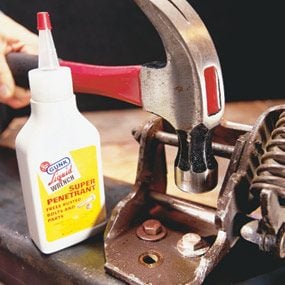
Then use oil and a hammer to loosen
When the bolt is cool enough to touch, squirt penetrating oil (it comes in a spray can or squirt bottle) on and around it—and on the nut if it’s accessible. Be careful, that stuff is flammable. Tap the end of the bolt a half-dozen times with a hammer to help loosen the threads and allow the oil to penetrate. Wait another minute or so for the oil to work, and then use your wrench.
Adjustable wrench technique
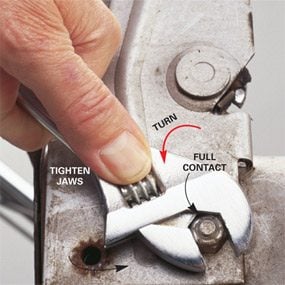
Use an adjustable wrench correctly
An adjustable wrench isn’t the ideal tool for loosening stuck fasteners because it can round over the head, making matters worse. But if an adjustable wrench is your only option, here’s your best shot at preserving the shoulders on the nut or bolt head and for one grip for all bolts: Slide on the wrench all the way, so there’s full contact at the back of the jaws. Then tighten the wrench thumbscrew so there’s no play at all in the jaws. Always turn the wrench handle toward the lower jaw, never away from it. Do you know the difference between screws and bolts?
Use a cheater bar (and the right socket)
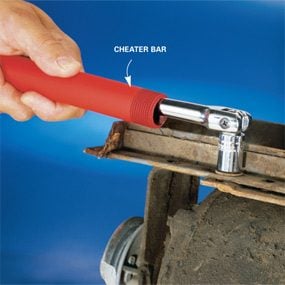
Use a short pipe to gain leverage
Be a cheater by slipping a short length of pipe—a cheater bar—over the end of your tool handle. The extra length gives you much better leverage. Be careful, though, not to use so much force that you break the tool (voiding the tool warranty) or break the head off the shank of the bolt. And remember to wear eye protection.
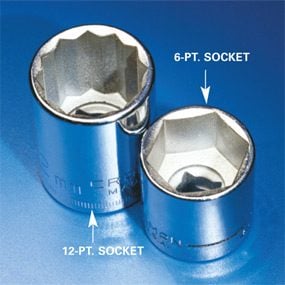
Six point sockets get a better grip
You’ll find that six point sockets get a better grip on hex nuts and bolts than 12-point sockets, which are designed to fit both hex and square fasteners.
Mangled slot (solution 1)
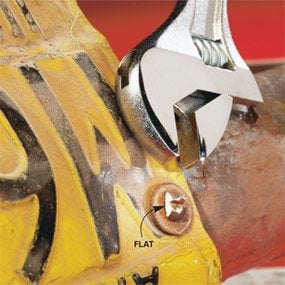
File edges and use an adjustable wrench
If the slot of a roundhead screw or bolt is chewed up beyond hope of gripping it with a screwdriver, file two flat edges on it. Then turn the head with an adjustable wrench.
Mangled slot (solution 2)
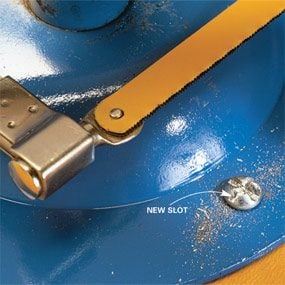
Cut a new slot with a hacksaw
Use a hacksaw to cut a new slot at a right angle to the old one. For big screws, put two blades in your hacksaw, right next to each other, and cut a wider slot so you can use a big screwdriver. This is also a great way to get a grip on the head of a stuck carriage bolt, which has no slot or flats.
Off with its head
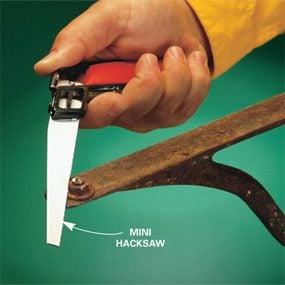
Cut off fastener head when all else fails
When there’s no other solution—when heat, penetrating oil and wrenches have all failed—cut off bolt heads or nuts with a hacksaw, reciprocating saw or a cold chisel. Some smaller fasteners, especially rivets and flathead bolts, may be easier to drill out than to cut.
Get a grip
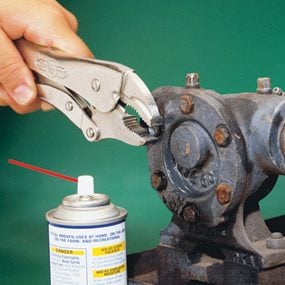
Use locking pliers to grip the fastener
When a bolt head has become so rounded that a wrench won’t get a bite, use locking pliers. Get a tight grip: You may have only two or three chances before the head gets so rounded that even this won’t work. Use penetrating oil, heat and tapping if it slips after your first try.
Sticking screw

Budge with a wrench and screwdriver
A wrench on a screwdriver blade will help beat that big screw that won’t budge. First select the largest screwdriver that’ll fit, and tap the butt of the screwdriver handle with a hammer to loosen the thread bond. Lean your weight onto the screwdriver to keep it in the slot as you turn it with the wrench. Careful—too much torque will bend the screwdriver tip.
Split a nut

Use a nut splitter to crack the nut
A nut splitter, also called a nut cracker, will crack any no-turn nut without damaging the threads of the bolt or stem that it’s screwed onto. Just slip the ring over the nut and turn the tooth into the nut until it breaks. Find a nut cracker at home centers or through our affiliation with amazon.com. Cost: $15.
A screw extractor
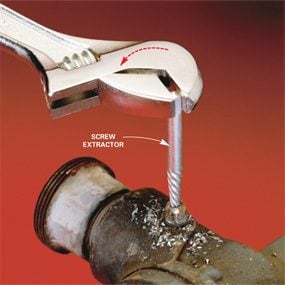
Use a screw extractor to grab it
A screw extractor could save your day. It will grab just about any threaded fastener and remove it—even if the head has snapped off. It usually comes with a hardened drill bit to drill a hole in the center of your stubborn screw or bolt. Then you turn the extractor counterclockwise into the hole. Because of its tapered shape and lefthand thread, the extractor will jam in the hole and then begin to turn out the screw. Cost: $6 at hardware stores and home centers.
Impact driver
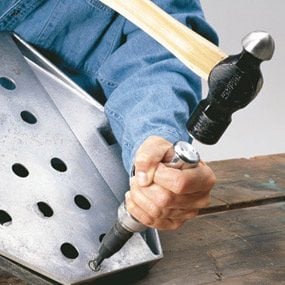
Try an impact driver
A hand impact driver works with a bladed or Phillips-head screwdriver bit, or a socket head. Striking the tool does three things at once: The blow loosens the thread bond; the downward force keeps the tool in the slot; and the head of the tool turns 20 degrees in the loosening direction. Make sure the screw slot is clean and free of debris. Find an impact driver at home centers or through our affiliation with amazon.com for $25.
Originally Published: June 14, 2019














